One would think that the information contained on the original vital record certificate and in the vital record register book for the same person and event would be identical. But is that always the case? As genealogists we understand that getting as close to the original record as possible is a necessity, but not always a possibility. We know that mistakes can be made in “copying” information from an original to a derivative. It is my understanding that in most places, if there are certificates and register books available concurrently, the certificates were filled out by the person required to make the return and then the information from the certificate was copied into the register books. That would make the certificate the original. And, to be clear, when I say original certificate, I mean an image copy or photocopy of the certificate (a.k.a. report of birth, record of death, return of death, etc.) that was filled out at the time of the event and returned to the proper authority (e.g., county clerk), NOT the pretty-little, non-official certificate the clerk’s office types up for you after extracting information from who knows where.
In the case I’m about to illustrate, the copying of the original certificate into the register wasn’t the problem. It’s a case of of two seemingly “duplicate” records, that aren’t exactly duplicates at all. Let me explain.
I initially had the birth register for Margaret Zimmerman, born in 1909 in Chicago (I obtained this in 2010). As you can see, this two-page spread implies that her father is Charles Zimmerman; since there is no surname listed for him or any others on the page, one must assume that the child’s surname matches the father. Now, I knew from other research that Margaret’s father’s name was Philip, so I made a note in my files about this discrepancy, thinking either it was an error or perhaps a middle or call name.
Fast forward to 2018. I obtained the birth certificate for Margaret, not realizing I already had the register. But it’s a good thing I did. While I do have both records for several of my Chicago people, I’ll admit that back in the day I never really compared them—I just assumed that what was on the certificate was also recorded in the register, and I between the two I used the certificate as my source since it was an image copy of the original. This of course was in my genealogy infancy stage. Now that I’m tuned in to scrutinizing records, I made a discovery today that will have me going back over all of my Chicago people to make sure I have the certificate, not just the register.
So what did I find that led me to this ah-ha moment? Well, first, there was a surname listed for the father: Hanfler. Huh? The only explanation I have is that Margaret’s mother’s father’s name was given, as Augusta is the daughter of Karl “Charles” Hanfler. Guessing that Augusta provided the information to the doctor who filed the return, she perhaps misunderstood the question, giving her own father’s name instead of her husband’s—she did die three days later from complications.
Okay, in that case, you could consider it a copying error, as the certificate clearly listed a different surname and probably should have been recorded. But that wasn’t all I found. The birth certificate has one item that is not in the register, and one item that’s worded differently (and a few other oddities I’ll mention later).
The birth register has a column for “No. of Child of this Mother” for which the number listed is six. Again, I obtained this record in 2010, and from my research, I knew of six children, so no conflict there. However, looking at the birth certificate, the item that likely corresponds to the register is: “Number of previous Children of Mother,” which states six. These are two very different statements. The first (the register) implies that newborn is child number six, while the second (certificate) is asking for the number of previous children, implying that the number doesn’t include the newly born child.
The birth certificate also has an item: “How many [children] now living (in all),” for which the answer is six. This is what caught my attention, since I knew that there were only five living children. So I reread the other item on the certificate (previous children) and thought: Does this mean there was another child that I don’t know about? If Augusta had six previous children (now seven in all by 1909) and six living (daughter Minnie born in 1904, died in 1906), that means either the questions were misunderstood, the information was recorded incorrectly, or there was another child. These are all possible scenarios, but the latter needs to be explored. Given that there is a gap between what I currently know to be child number five (Minnie, born 1904) and child number six (Margaret, born 1909), it’s possible there’s another child. (There is a four-year gap between Minnie and her older sister Mary, who was born in 1900, but the answers to these same questions indicate that there were four children born before Minnie, and five in all now living, making Minnie child number five.) And, since I haven’t been able to find the family in the 1910 census (which is moving up on my to-do list) I have no idea if there is a child that’s been unaccounted for. Also now on the to-do list is a new birth record search for another child born to these parents between 1904 and 1909. It is of course possible that Augusta, assuming she was the informant, misunderstood the questions, like with the father’s name. But, before any conclusion can be made, I need to explore the “missing child” theory further.
The register also doesn’t show the file date, which can be a helpful tidbit in many situations. Additionally, the certificate could be returned by “the physician, midwife (when in attendance), parent, or householder,” but the corresponding column in the register is headed “Name of Party Attending and Making Return” and only lists a name and not their role like the certificate does.
As you can see, it pays to get all of the relevant sources, even if you think there may be a duplication of information. In this case, the register didn’t add anything. If anything, it led to confusion about the father’s name making my theory about a middle or call name false, and it led me to believe that I had accounted for all of the couple’s children—which may or may not be true. For these specific Chicago record sets, it’s best to seek out the certificate over the register, as the certificate is the original. (This is likely the case in other locations where both records exist concurrently, but to be sure, examine the form’s directions and/or consult the law.) BUT, it doesn’t hurt to obtain both the register and the certificate, so long as you scrutinize both and correlate your findings with other research. If a register is all you can find, keep in mind that it’s likely derivative.
For most of my Chicago people, I have both records, but I primarily focus on the certificate, knowing it’s the original. In the case of this family, I was initially content with the register (which at the time were available on FamilySearch for free, as were the certificates, neither collection being complete) and sometimes even just the index entry, as this is a collateral family. However, I need to examine this family in closer detail to prove other family connections. Although I I typically use the certificates over the registers, my little lesson today just reinforces why it’s so important to find the original whenever possible.
Do you have a similar story? Please leave a comment so we can all learn from each other!
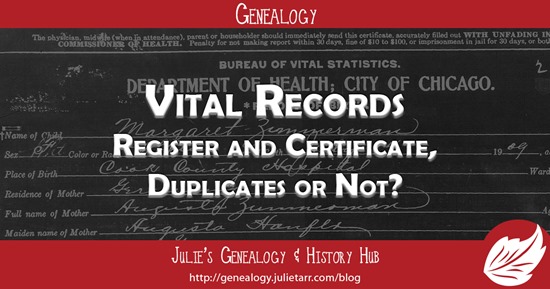
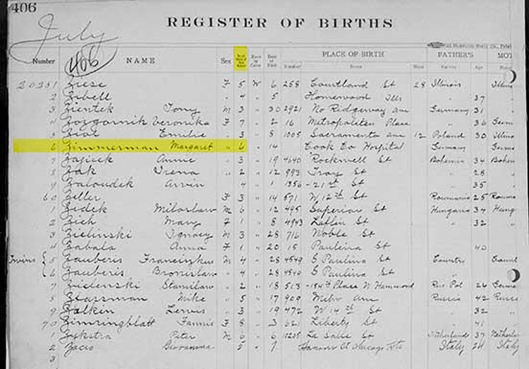
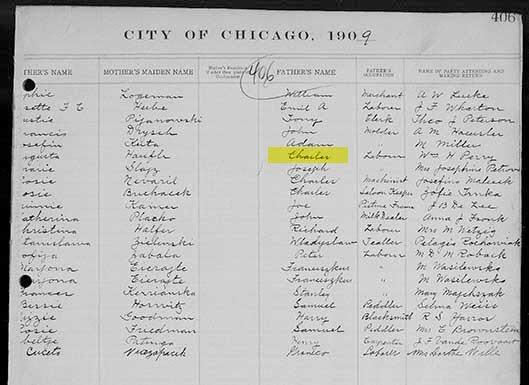
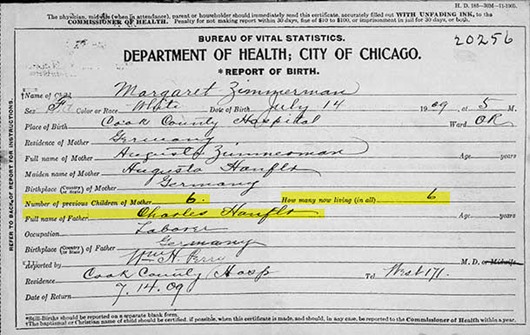
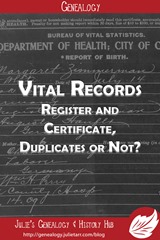

Share your thoughts...